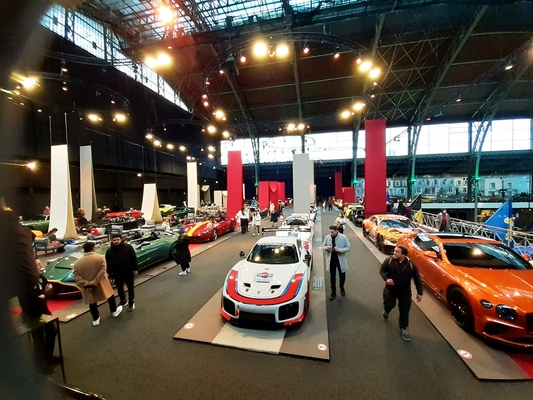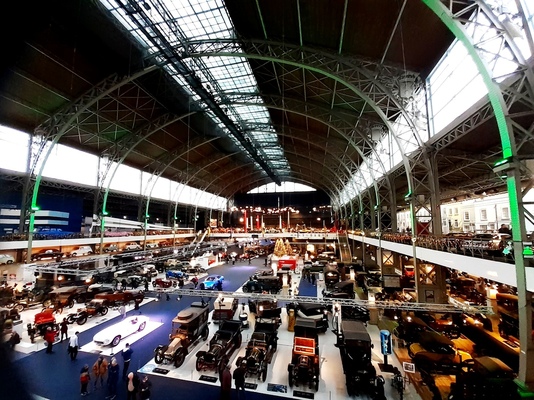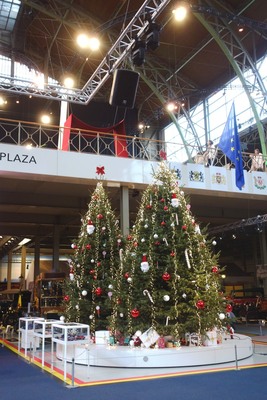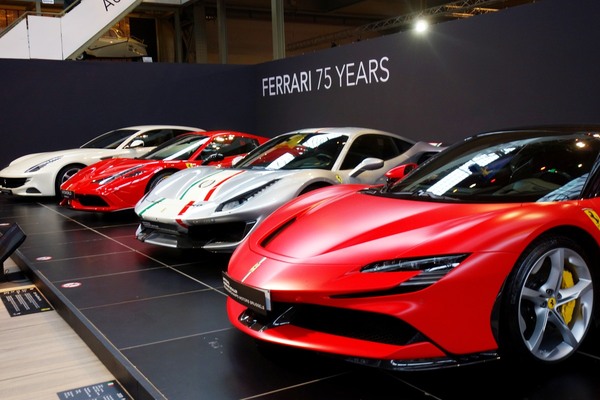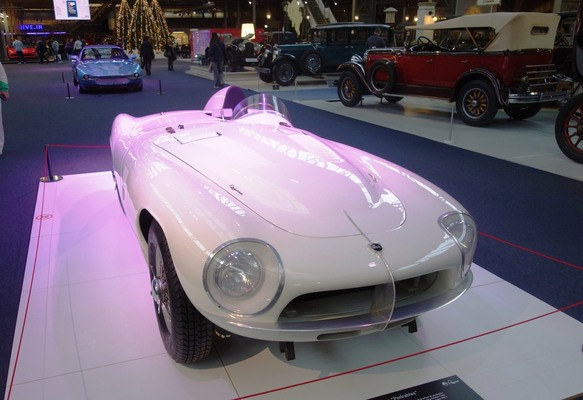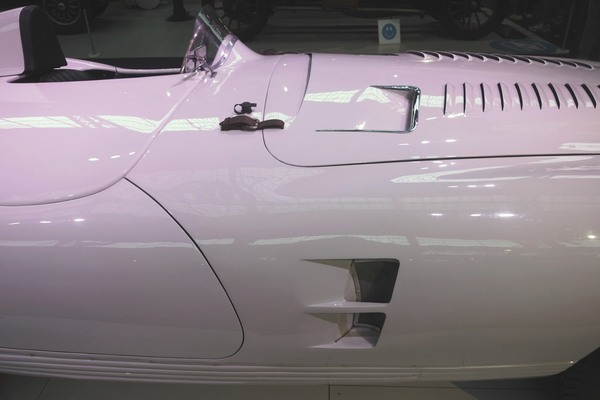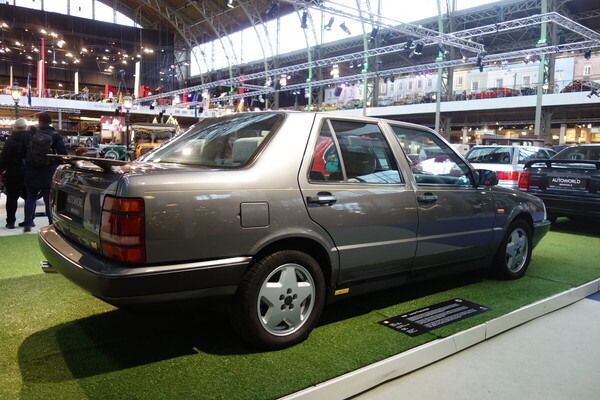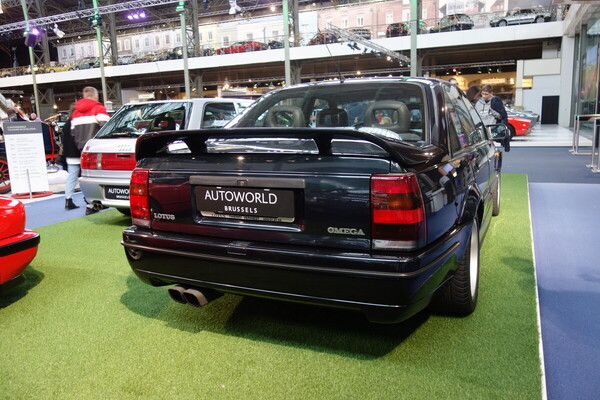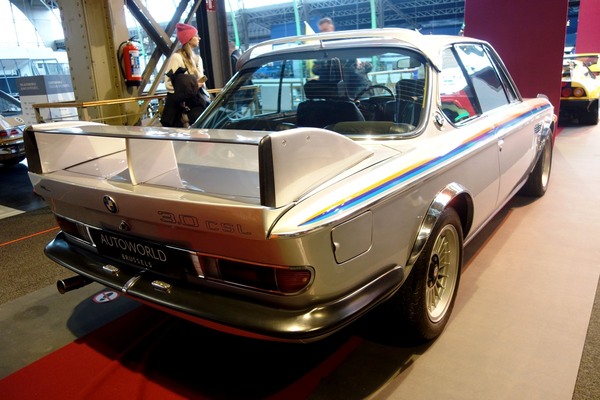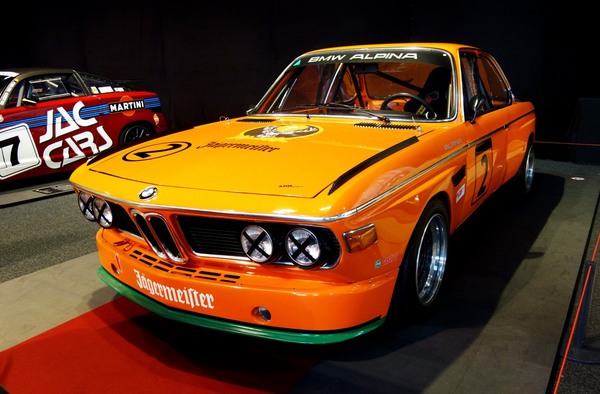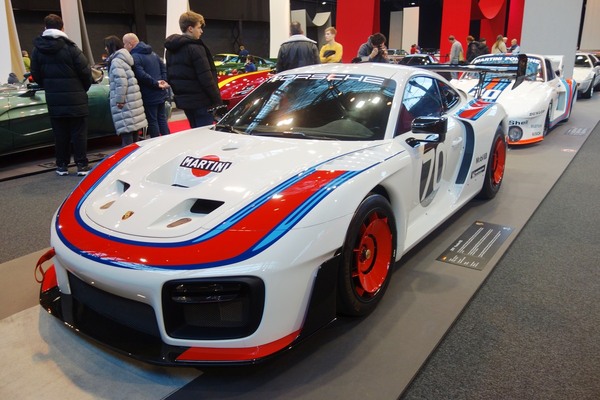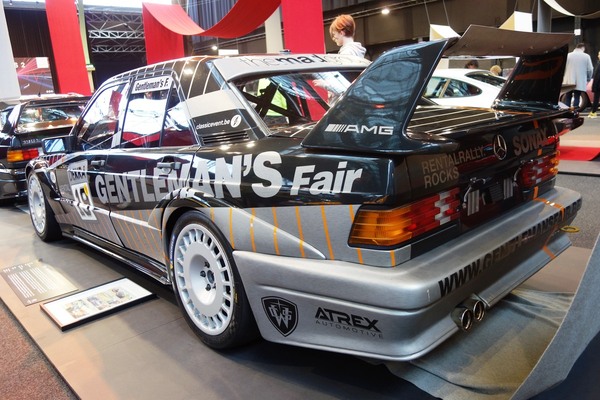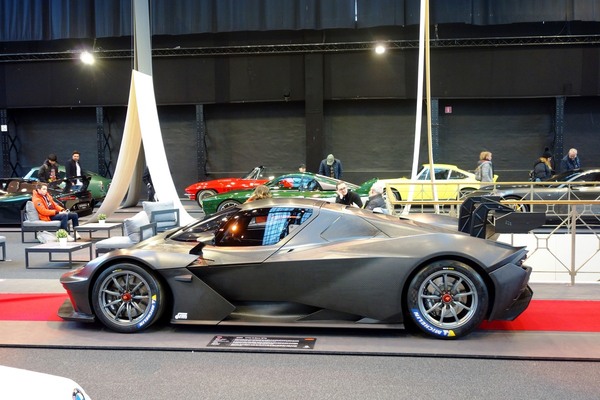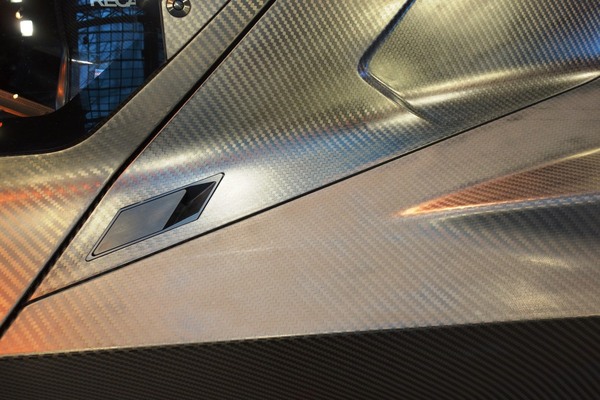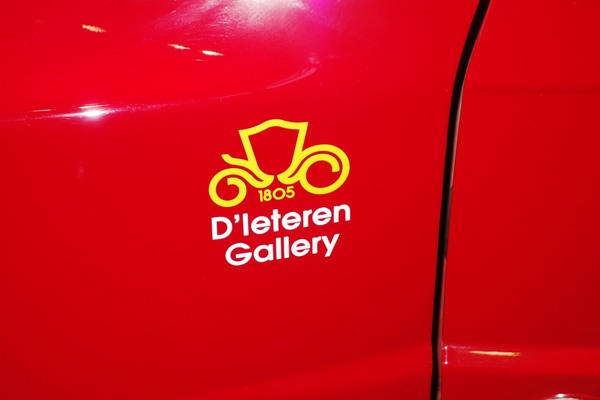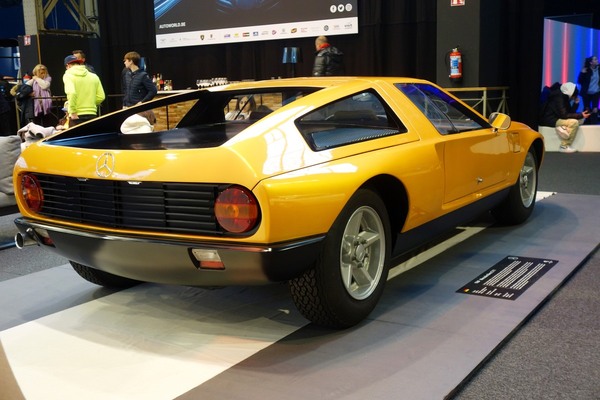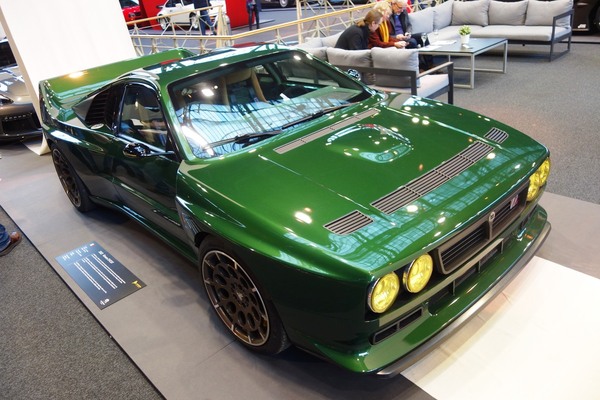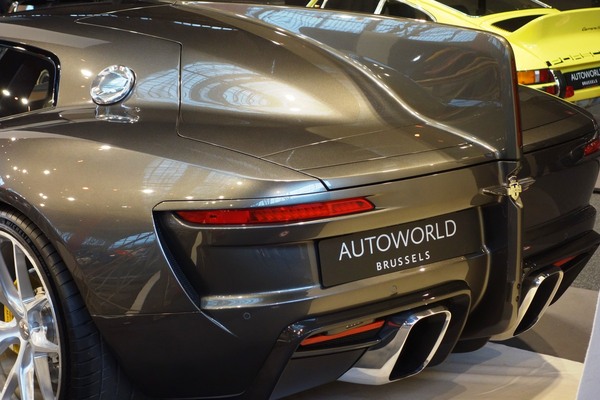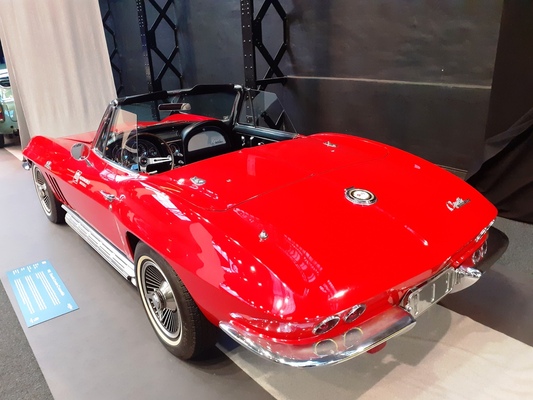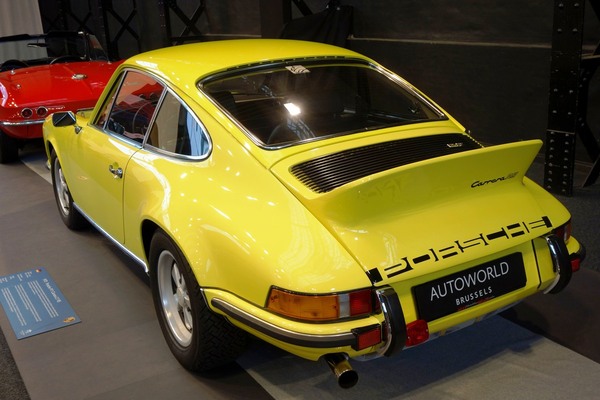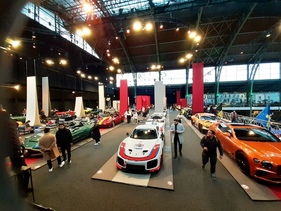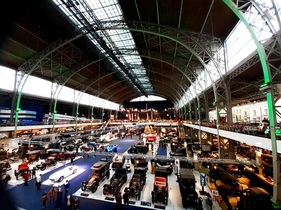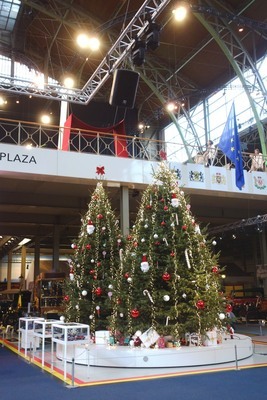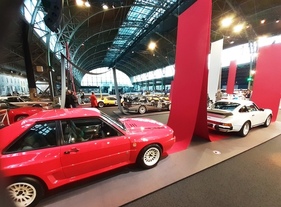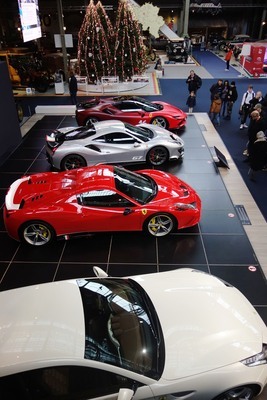It is a truism that the whole is more than the sum of its parts. So anyone who thinks they have seen one or two of the vehicles in the current "Supercars 2" special exhibition at Autoworld Brussels somewhere before is missing the point. Because it's the mixture that makes it so special.
As the first "Supercars" exhibition a few months ago was already a success, it made sense to follow it up with another one at the end of the year. Its composition is just as convincing as the didactics and the ambience.

More than 50 exhibits from the years 1954 to 2022 await the visitor. It is pointless to quantify the exact number of "supercars", because in addition to the almost 40 cars exhibited on the mezzanine (Herman de Croo Plaza), sports cars from the recently completed "75 Years of Ferrari" exhibition are also on display, which of course fit in perfectly with the theme.
Even before entering Autoworld, classic car enthusiasts are greeted by a Ferrari Testarossa, which is used extensively for selfies.
Wide range of vehicles
Once inside the building, the first thing that catches the eye is the oldest car in the special show, a Pegaso Z-102 Enasa "Pedrables", which is also a reminder of the remarkable Pegaso exhibition held at the same location in 2018.

Behind it is a Touring Superleggera Sciàdipersia from 2019. To the left is a group of touring cars from the 1980s/90s, consisting of an Audi RS2, a BMW M 5, a Lancia Thema 8.32 with a Ferrari engine and an Opel Lotus Omega.
Opposite and on another part of the first floor, further Ferraris are on display, but these will not be discussed here because of an earlier report on the recently completed Ferrari exhibition at Autoworld.
Super (sports) cars under fabric panels
Let us now climb the stairs to Herman de Croo Plaza. There, a sophisticated collection of exquisite super sports cars awaits car enthusiasts in five rows. The presentation is livened up by artfully draped fabric panels hanging from the ceiling. There are also comfortable and inviting seating areas. This deserves a special mention, because unfortunately many classic car events - unlike art museums, for example - do not provide adequate seating.
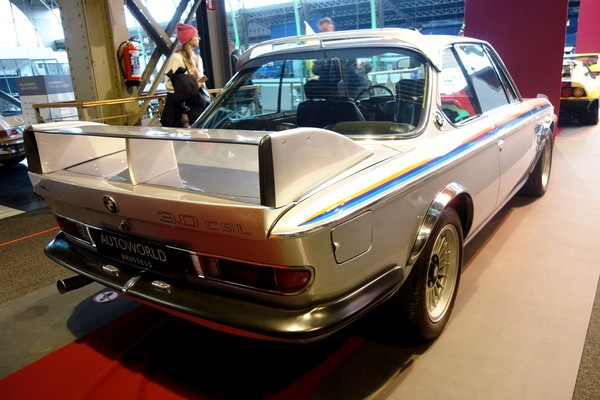
In terms of content, the concept of putting production sports cars in relation to their racing counterparts is convincing. Examples include the Ferrari 512 BB and the corresponding "Competizione", the BMW 3.0 CLS and the corresponding Group 2 car in "Jägermeister" livery, the Mercedes-Benz 190-16 2.5 Evo II and its AMG counterpart and the BMW M1 / M1 Procar pair.
The composition within the individual brands is also interesting: Aston Martin's DB4 from 1961, the ultra-flat Lagonda Series III saloon from 1985, the Rapide from 2012 and the V12 Speedster from 2022 with its split seats can be seen.

The contrast between classic and new is also appealing. The Porsche 935 "Baby" - once driven by Belgian racing legend Jacky Ickx - is paired with the Porsche 935 from 2019. And the ultra-modern KTM X-Bow GT 2 from 2022 was placed right next to the classic Porsche 930 Turbo from 1978.
Old and (almost) new
In general, the current "supercars" have been very cleverly mixed with the classics. For example, the Kimera EVO 37 - also from 2022 - is unlikely to be recognized as a new creation at first glance.
An attractive contrast to the Dallara Stradale from 2020 is certainly the iconic Mercedes-Benz C 111 from 1969. The car painted in "white autumn metallic" (a kind of orange) with its 4-disc Wankel engine from the Stuttgart factory museum seems to magically attract visitors.

The TVR Sagaris from 2005 with its unrecognizable design is almost a youngtimer. Almost in the same color right next to it is another visual highlight: the Touring Superleggera Aero 3 from 2020 based on the Ferrari F 12 Barchetta. Its defining styling element is probably the most beautiful fin since the Bugatti T 57 Atlantic.
Many four-door models
However, the aforementioned modern "supercars" are not at the expense of the classics. A Mercedes-Benz 300 SL Roadster from 1959, a Chevrolet Corvette from 1965 and the sports saloons Iso Rivolta Fidia from 1972, Maserati Quattroporte II from 1978 and De Tomaso Deauville from 1978 are not missing from the special show.
The Group B rally cars are represented by a 1986 Ford RS 200 and a 1985 Audi Sport Quattro.
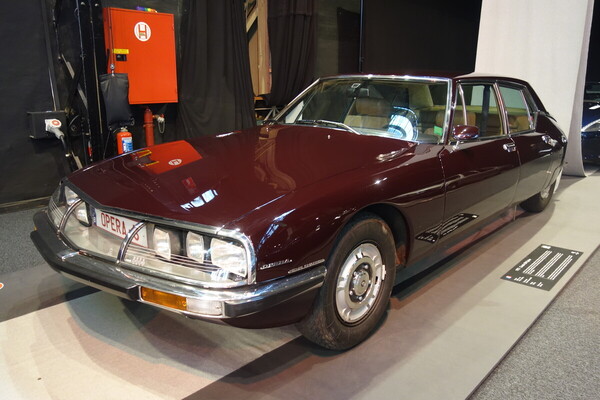
Finally, a four-door (!) Citroën SM Opéra from 1972 can also be spotted in the semi-darkness. After coachbuilder Henri Chapron had produced two four-door convertibles for the French state, a total of eight examples of the SM Opéra were also built on a base extended by 29 cm; one of these was delivered to the Spanish dictator General Franco.
All in all, Autoworld Brussels once again put on a successful special show. A visit should be followed by an additional tour of the permanent exhibition. You may discover one or two exhibits that fit in with the exhibition theme, such as a Bizzarini AMX/3 Spyder.

The "Supercars 2" exhibition can be visited at Autoworld in Brussels until January 29, 2023.


